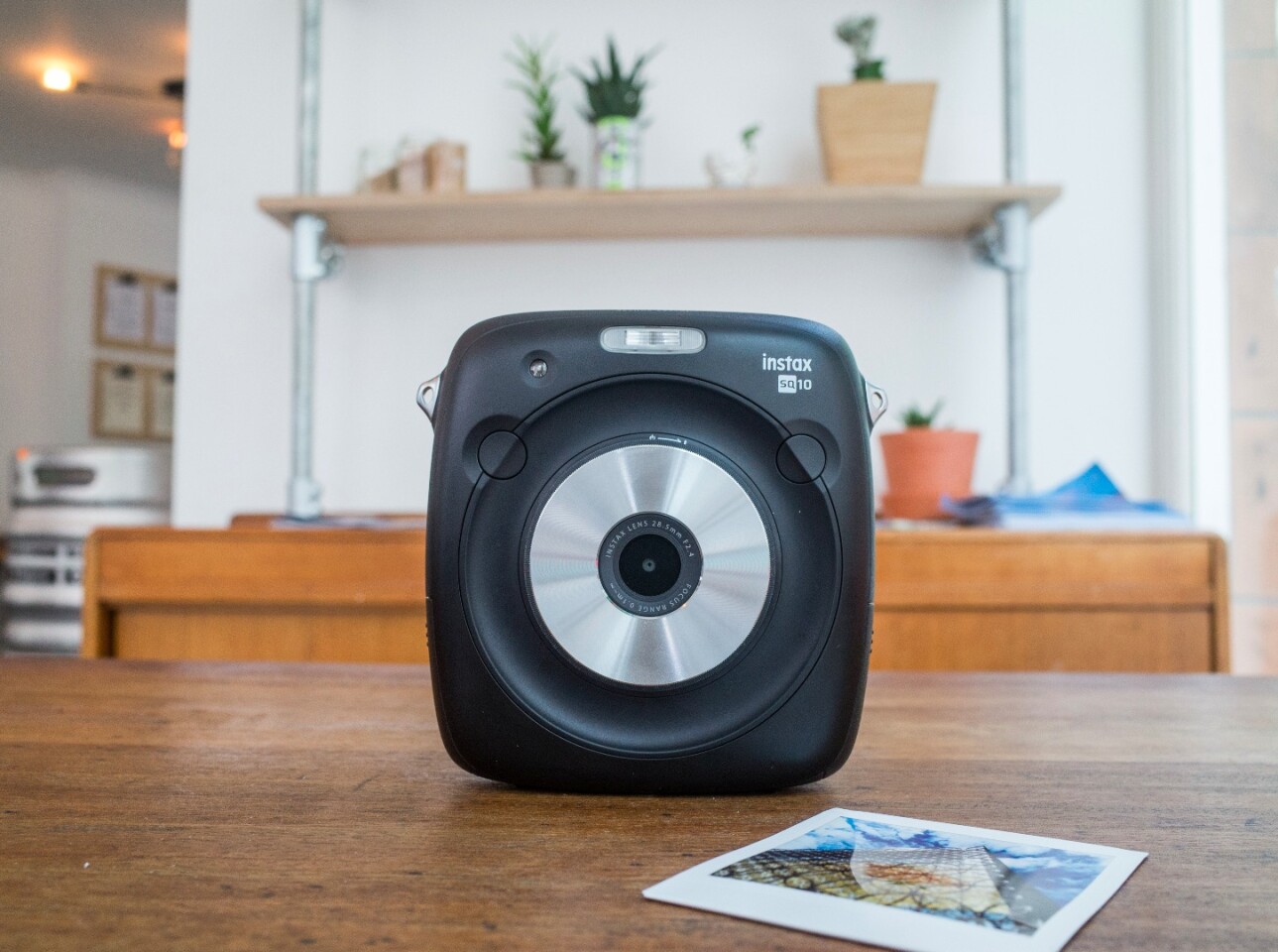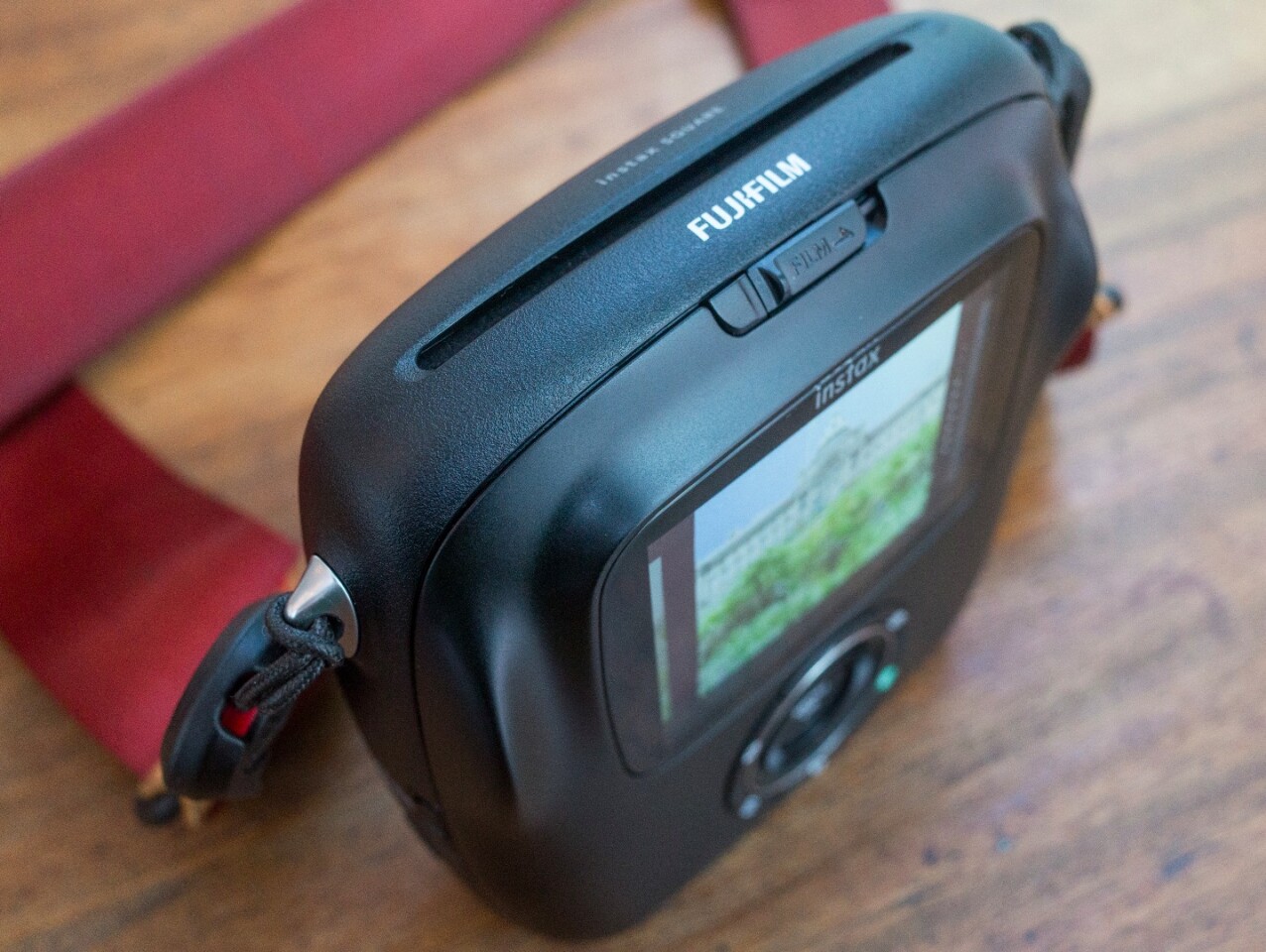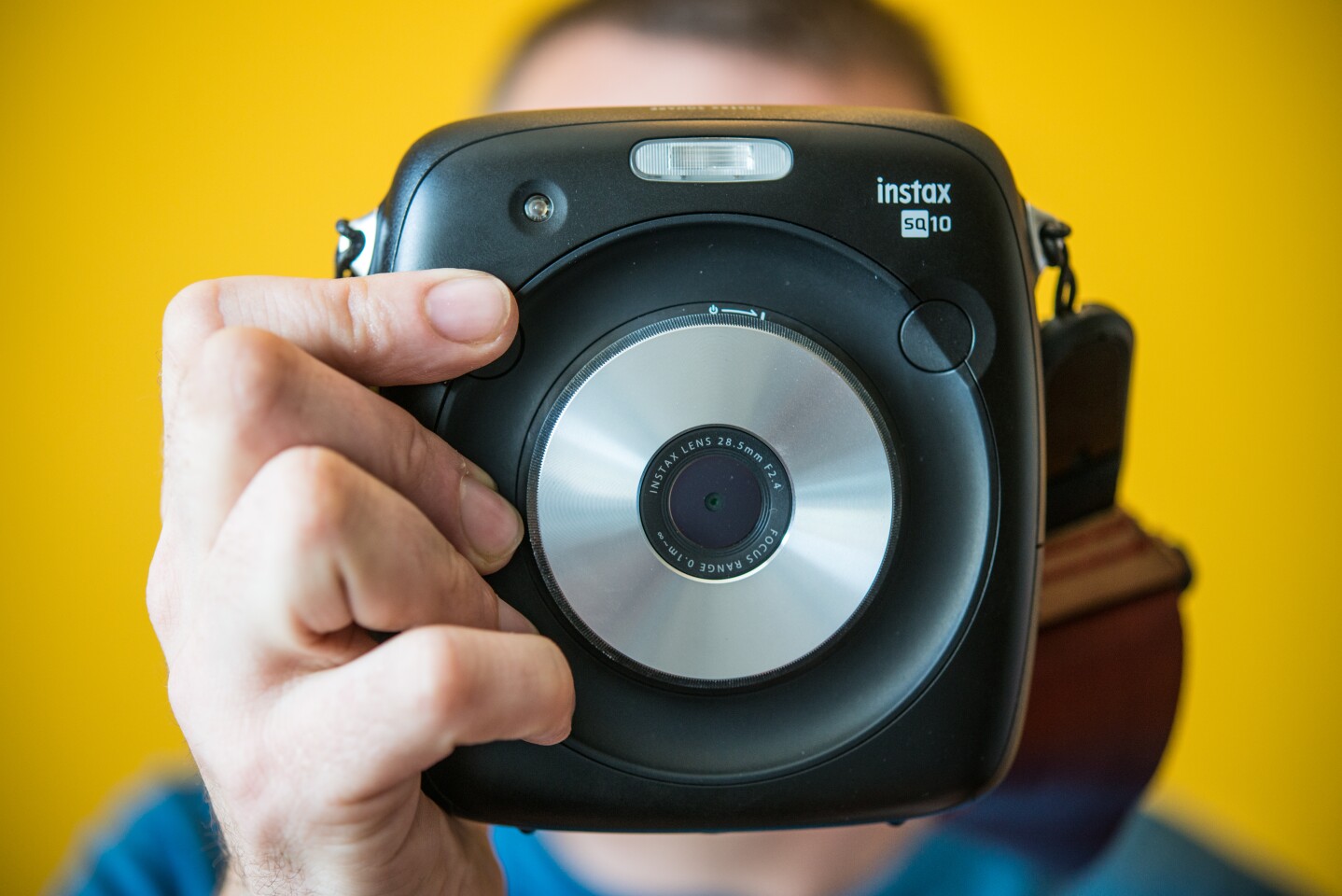Fujifilm's SQ10 is the first digital Instax camera, and the first to use the firm's new square format film cartridges. But does the mix of instant and digital make for a smarter instant camera, or a less satisfying experience than simply using either a traditional digital camera, or an analog instant? We take the SQ10 for a spin to find out.
Before we get started, it's worth noting that the Instax SQ10 is best considered as an instant camera with digital abilities, rather that a digital camera with instant printing skills. If you do anything else you're going to be sorely disappointed. That's because the SQ10 has a 1/4-inch 3.6-megapixel image sensor, and with this not being 2003, you've almost certainly got a better camera in your pocket.
However, as an instant camera which lets you print only your best shots, produce multiple prints of the same image, apply filters, and retain digital copies of photos, it's a much more compelling prospect. There's also the fact that it produces square prints which are sure to appeal to both the Instagram generation, and those who have fond memories of shooting with a Polaroid, but have since been spoiled by the convenience of digital cameras.

Out of the box the Fujifilm Instax SQ10 is a striking camera. Yes it's just as big and bulky as you'd expect of an instant camera, but it's stylish with symmetrical features and a big metallic ring on the front which doubles as an on/off switch. Indeed, the SQ10 attracted more comments than almost any other camera I've had around my neck (maybe barring the time I used a Petzval lens mounted on a Nikon D800), this is good news if you are looking for a conversation starter which also takes pictures.
On the top there's the familiar slot where instant prints emerge from and a button to open the camera, allowing users to load cartridges of Fujifilm's new Instax Square Film format. But around back the digital credentials of the SQ10 also become clear. There's a 3-inch 460k-dot monitor which is used for composing and reviewing images, along with viewing a simple menu interface. Below this there's a control wheel and a series of buttons for editing and printing images.

Using the SQ10 is about as simple as it gets. After loading a film cartridge and turning the camera on, taking a photo is just a case of hitting the shutter button. This can be either of the buttons on the face of the camera (left-handers will appreciate the ability to set this), with the other giving the option of altering shooting mode between standard, double (where two shots are layered) and bulb (where the shutter is kept open while the shutter is pressed). Battery life seems good and we didn't need to recharge when shooting over 100 shots and printing 10.
Because the camera is fully automatic there are no manual settings to get excited (or worried) about. While there's a manual/automatic switch on the side of the camera which might suggest otherwise, this actually refers to printing options, and whether you want to manually select which images to print, or automatically print them all like a traditional instant camera.

That said, there are a number of image adjustments which can be made during shooting, such as applying one of 10 filters (think basic Instagram-like tonal adjustments) applying a vignette, altering brightness, or zooming in. However, these are non-destructive edits which can just as easily be applied and changed after shooting. They're also only really relevant for viewing on the camera or making prints, because digital images are saved as JPEG without these adjustments, and are simply accompanied by a CSV file with these edit details.
As a result, looking at the images stored on the internal memory (good for 50 shots) or a micro SD card can be a bit disappointing. For starters, with no built-in wireless capabilities you need to physically remove the memory card, an act which itself feels dated. Then, when you do, the images show all the dynamic range and noise limitations you'd expect from that 3.6-megapixel sensor, and you don't get to see the image adjustments you've made.

While fine for social sharing, you're still going to get better images with your smartphone than this £250 (US$280) shooter. The 28.5 mm (35-mm format equivalent) F2.4 lens is also going to give a similar view than a standard smartphone camera.
It might look at this point like the SQ10 is heading towards a bit of a slating. Well, if we were looking at it as a digital camera with an instant printer it certainly would, and we'd recommend you just got a portable printer to go with your current camera. But the SQ10 is billed as an instant camera with digital features so that's how we are approaching it, and it fares much better when seen from this perspective.

The big advantage over traditional instant cameras is that not every press of the shutter button is costing you money. By being able to review images on the back of the camera, you can ensure you're only printing the photos you actually want prints of, not those ones with someone's eyes closed. This is good news considering each Instax Square Film cartridge of 10 exposures will set you back around £15 (or $16).
Also, being able to make adjustments to the images before printing them is something we enjoyed being able to do. While the image filters aren't too inspiring when seen on the rear screen, they look much better in the resulting prints. There's also the option to zoom into the image, without adversely impacting the quality of the print, this is because the full file is 1920 x 1920 pixels, but the printing only uses a 800 x 800 resolution. The digital nature of the camera also allows multiple prints of the same image, and prints displaying four or nine images in a grid.

As for the process of printing itself, it feels much like a traditional instant camera, especially if shooting in automatic where all shots are printed. If in manual mode, pressing the print button (and then confirming with a second click) will start the process which sees an animation of the photo moving towards the top of the camera, as a blank print pops out, taking about 12 seconds to fully emerge.

Over the next couple of minutes the photo will then slowly appear in the way which will be familiar to anyone who has ever used an instant camera. And no, there's no need to shake it.
Print quality is far better than some other instant digital cameras like the Polaroid Snap Touch, and the 1:1 square ratio of the new film makes it stand out compared to existing Instax Mini or Wide prints. Each exposure measures 62 x 62 mm (2.4 x 2.4 in) in a 86 x 72 mm (3.4 x 2.8) film frame.
Summary

Given its lackluster digital specifications we shouldn't like the Fujifilm Instax SQ10. It has a tiny sensor, a megapixel count straight from the early noughties, it's slow and bulky, and is generally everything we don't want in a new camera. But, it's also a wonderfully fun camera which we have to admit being a bit smitten with.
Previously we've been put off instant cameras for a number of reasons, most notably the fact that every press of the shutter button results in a costly print, even if the photo isn't what you want. With the SQ10 that's no longer the case, you can snap away, but only print the images you want, potentially meaning you'll end up with better quality images.
It also allows you to produce multiple prints of the same image, which can be good if you have taken a shot with a friend, or want to give one to your subject. There's also the added bonus of having a digital file of those photos.

However, the SQ10 isn't perfect. Given the square film format and the filters on the camera, it should have also made a good Instagram and social sharing camera. But the digital image quality, and the process of getting images from the camera, mean you're better off sticking to your smartphone. Because the camera uses micro SD rather than SD cards, there's no option to use an Eye-Fi card either. Another minor omission is the lack of a front selfie mirror, like that on the Instax Mini 9.
Priced at £250 (or $280), the SQ10 is up there with the more expensive instant cameras, like the Impossible I-1 or the Leica Sofort, but has those added digital skills which will improve the experience for some users, while spoiling the ethereal analog feel for others.
Product page: Fujifilm Instax SQ10


































